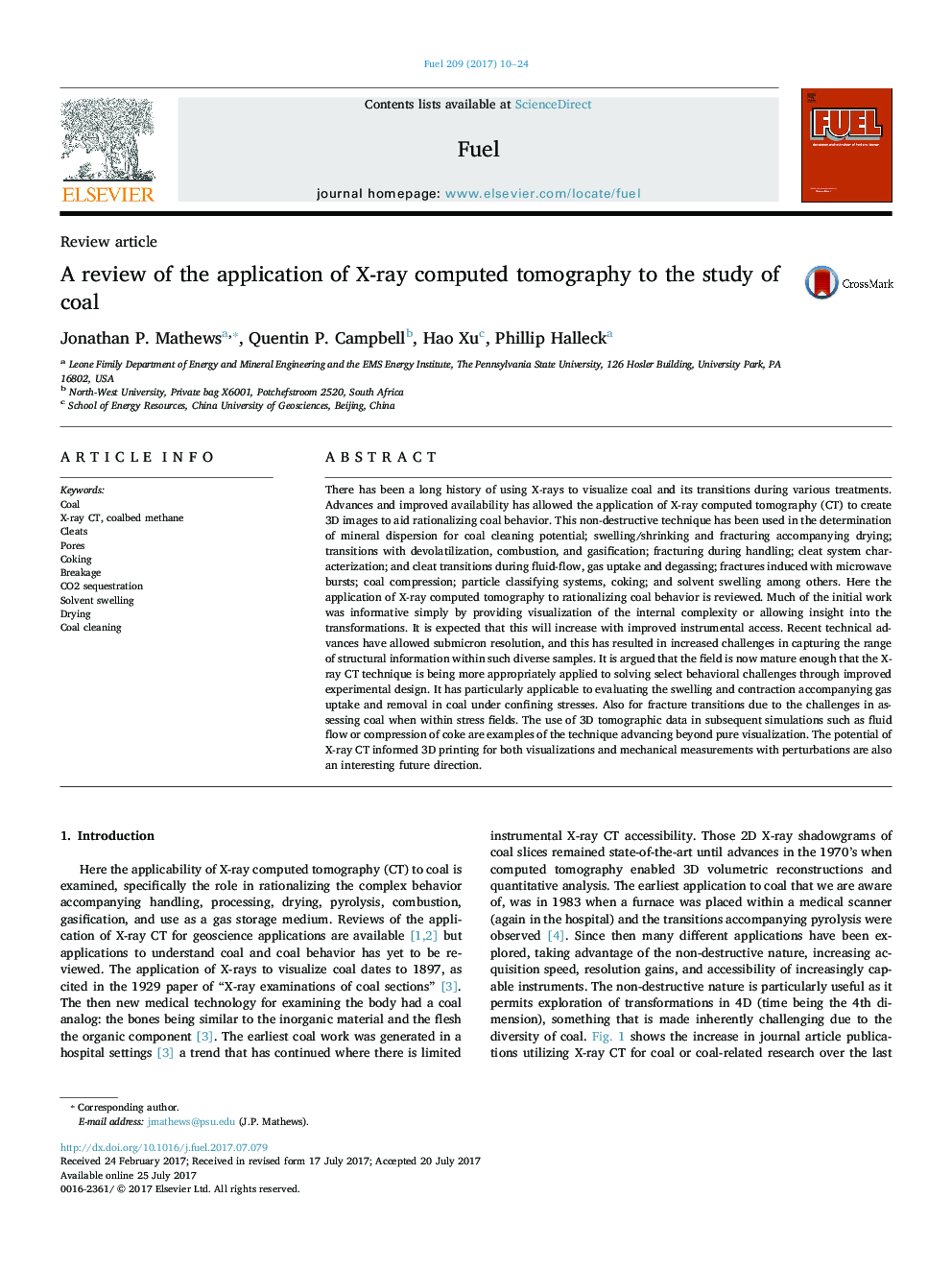| Article ID | Journal | Published Year | Pages | File Type |
|---|---|---|---|---|
| 6473808 | Fuel | 2017 | 15 Pages |
There has been a long history of using X-rays to visualize coal and its transitions during various treatments. Advances and improved availability has allowed the application of X-ray computed tomography (CT) to create 3D images to aid rationalizing coal behavior. This non-destructive technique has been used in the determination of mineral dispersion for coal cleaning potential; swelling/shrinking and fracturing accompanying drying; transitions with devolatilization, combustion, and gasification; fracturing during handling; cleat system characterization; and cleat transitions during fluid-flow, gas uptake and degassing; fractures induced with microwave bursts; coal compression; particle classifying systems, coking; and solvent swelling among others. Here the application of X-ray computed tomography to rationalizing coal behavior is reviewed. Much of the initial work was informative simply by providing visualization of the internal complexity or allowing insight into the transformations. It is expected that this will increase with improved instrumental access. Recent technical advances have allowed submicron resolution, and this has resulted in increased challenges in capturing the range of structural information within such diverse samples. It is argued that the field is now mature enough that the X-ray CT technique is being more appropriately applied to solving select behavioral challenges through improved experimental design. It has particularly applicable to evaluating the swelling and contraction accompanying gas uptake and removal in coal under confining stresses. Also for fracture transitions due to the challenges in assessing coal when within stress fields. The use of 3D tomographic data in subsequent simulations such as fluid flow or compression of coke are examples of the technique advancing beyond pure visualization. The potential of X-ray CT informed 3D printing for both visualizations and mechanical measurements with perturbations are also an interesting future direction.
